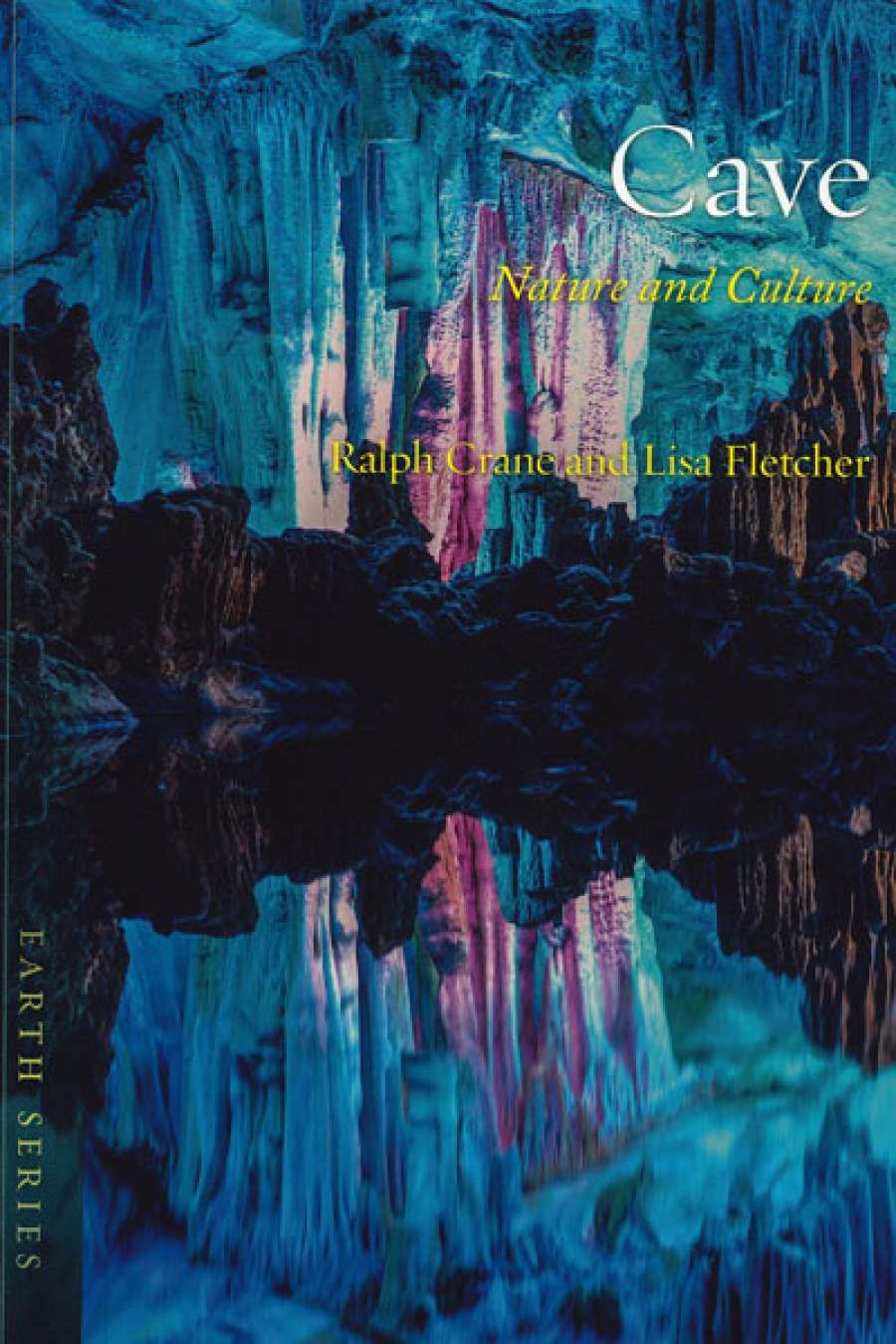
- Free Article: No
- Contents Category: Environmental Studies
- Custom Article Title: Danielle Clode reviews 'Cave' by Ralph Crane and Lisa Fletcher
- Book 1 Title: Cave
- Book 1 Subtitle: Nature and Culture
- Book 1 Biblio: Reaktion Books (Footprint), $29.99 pb, 222 pp, 9781780234311
This book documents our long and profitable association with caves. We regard our prehistoric ancestors as ‘cavemen’, and caves record some of our earliest records of human culture. Here we find bones, evidence of hunting and cooking, and great galleries of artwork. Caves are natural museums: often pristine environments in which the remains of past lives are preserved and protected from the elements and disturbance. Their sheer scale deters casual intrusion into all but their entrances. Mammoth Cave in Kentucky is the longest known cave system, running to 620 kilometres, while the deepest caves known are found in Georgia. The Krubera Cave sinks more than 2,000 metres deep. It was only with the advent of the modern speleologist, like Frenchman Édouard-Alfred Martel in the late 1800s, that this ‘dark playground’ opened up to systematic exploration. As the unknown surfaces of the earth retreated beneath the pens of the cartographers, the adventurers and explorers headed into caverns underground, even underwater, to find the new territories they craved. ‘Does it go?’ they ask. ‘For how long and how far?’
Cave is one of fourteen books in the Earth series distributed by University of Chicago Press since 2012. These books, all subtitled Nature and Culture, are intended to bring together ‘science, art, literature, mythology, religion and popular culture’, although the experts chosen to write on their favourite topics seem very much weighted towards culture rather than nature. Perhaps as a result, Cave does not follow the typical path to scientific illumination, that of consolidating and clarifying. Rather it takes a more literary approach of opening up connections and associations, building layers of meaning and cultural resonance. Rather than making a map of the caves, the authors are listening to the echoes of those who have travelled that way before them. As a result, this book often feels a bit like cave exploration might, with many uncharted twists and turns, sometimes returning us to somewhere we have been before, sometimes leading to vast unexpected caverns, while finding other promising corridors unexpectedly blocked.
 Composite photograph of Southern Bentwing Bats, Naracoorte Caves, South Australia
Composite photograph of Southern Bentwing Bats, Naracoorte Caves, South Australia
‘Caves are, literally and figuratively, the gaps and fissures between the bedrock of our knowledge’
There is certainly a wealth of material on the art, literature, mythology, and religion associated with caves. To provide just one example, the melodious Fingal’s Cave off Scotland inspired William Wordsworth, Alfred Tennyson, John Keats, Walter Scott, and Jules Verne. J.M.W. Turner produced broody seascapes of the cave, while Felix Mendelssohn was stirred to create his tumultuous Hebridean Overture by its dramatic soundscapes. The respective chapters of Cave provide a litany of other examples, from the Odyssey to The Lord of the Rings to The Silence of the Lambs, from creation myths to magic and mythology. While the rich vein of poetry, literature, and popular culture references enriches this book when woven through other material, a more selective approach in the later chapters might have allowed space for a greater discussion of the remarkable geology, mineralogy, chemistry, and biology of caves.
The text is attractively illustrated with glossy colour plates whose value would have been enhanced if they had been more directly connected to the text itself. The striking cave interiors and bizarre troglophile fauna are complemented with colourful posters and paintings that sometimes steal the show. It is hard to imagine any text being as dramatic as the image of giant gypsum crystals in the Naica Caves of Mexico, stabbed like giant swords of ice across the path of an unwelcome intruder.
Caves are seen as a source of creation and wisdom, as well as a source of our worst fears. In both cases, they represent the unknown. This book provides an intriguing opening into that poorly understood underground world and the mysteries and secrets (both imagined and real) that lie deep within it.


Comments powered by CComment